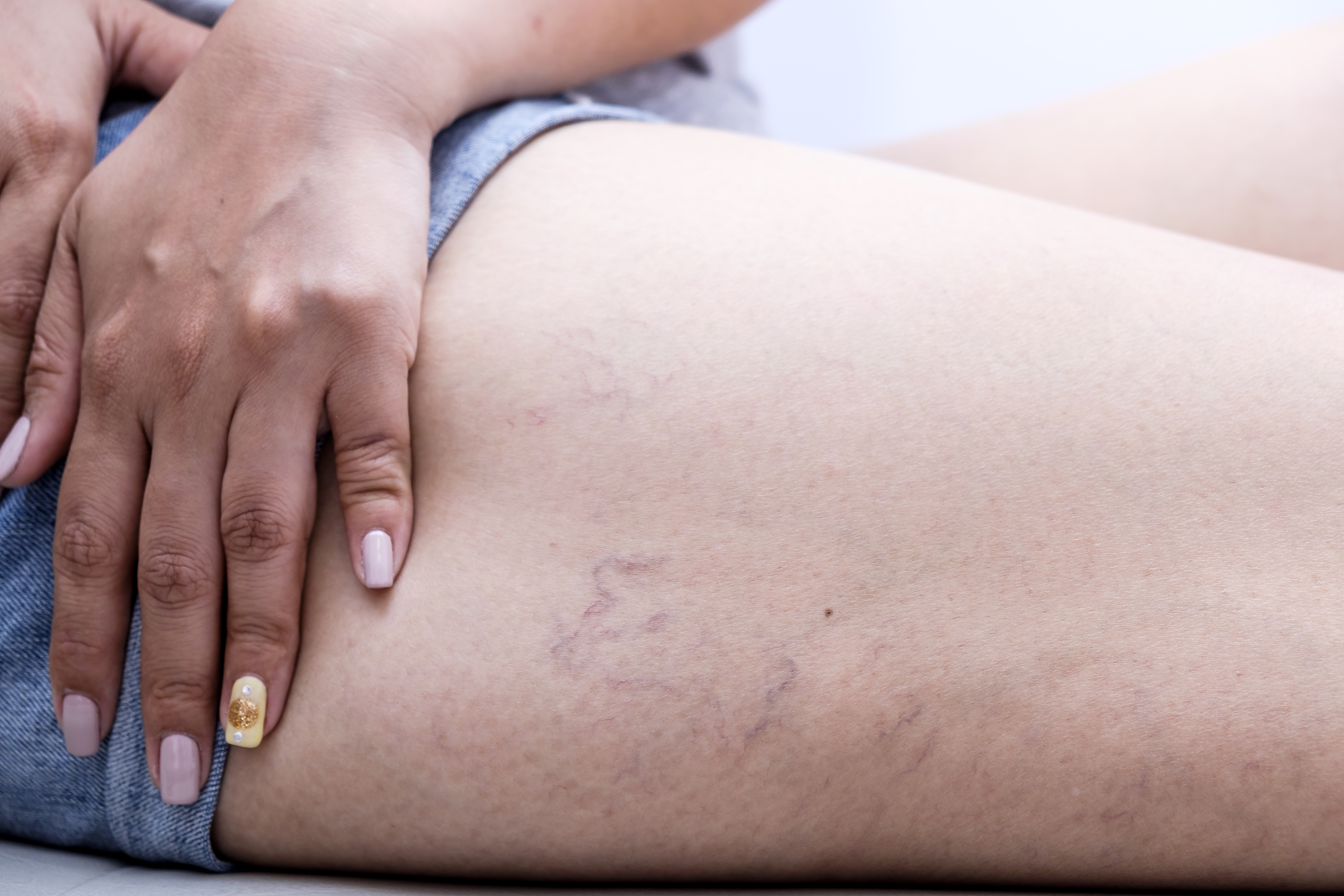CONTACT US

What You Need To Know About Vein Removal

Vein Removal Treatments
Spider veins are small, damaged veins that can appear commonly on the surface of the legs or face. They are usually not painful or harmful, but some people may wish to treat them for cosmetic reasons. Spider veins can be blue, purple, or red and may appear in the form of thin lines, webs, or branches. People sometimes also refer to them as thread veins. The cause of these could be a number for reasons.
- Genes: People whose family members experience spider veins and broken capillaries are more likely to have them, too.
- Sun exposure: Sun damage can enlarge the blood vessels and draw them closer to the skin.
- Changes in weather: Drastic changes in the weather may affect the circulation in the body, causing the skin in the face to flush. The blood vessels may burst, causing a spider vein.
- Changes in pressure: Sudden, extreme changes in pressure may cause small broken blood vessels to appear. An exceptionally hard sneeze or vomiting can cause this change in pressure.
- Pregnancy: Hormonal changes during pregnancy and an increase in blood circulation may also cause broken blood vessels.
- Environmental irritants: Exposure to certain chemicals or environmental pollutants may damage the skin and make blood vessels more visible.
- Rosacea: This is a common condition that causes the skin to become flushed and red due to enlarged veins. People with rosacea often experience spider veins.
- Alcohol consumption: Alcohol can dilate the blood vessels temporarily. Frequent alcohol consumption may lead to longer-lasting broken blood vessels and redness on the face.
- Injuries: Bruising from injuries may also cause broken blood vessels
Long Pulse and Dual VP handpieces by SharpLight are both effective at treating spider veins depending on the area. Dual VP is very effective in treating broken capillaries on the face, neck, chest and hands, where Long Pulse is very effective at treating spider veins on the legs.
The Long Pulse Nd:YAG 1064nm travels deep within the dermis targeting selected spider veins. The Laser is absorbed by oxyhemoglobin in the vessel. The energy is therefore transferred to the surrounding vessel wall causing coagulation in the vessel. Laser leg vein treatment endpoints on skin types 1-4 are immediate vessel disappearance and visible intravascular thrombosis or rupture. The Long Pulse is only recommended spider veins and is not indicated for treatment of larger vessels.
Treatment Advice:
When using the Long Pulse, select 3mm spot size and select long for the type of pulse to treat veins. Follow SharpLight parameter guide to select appropriate settings for the client’s skin type. Locate the vein for treatment and apply ultrasound gel. Hold the tip close and perpendicular to skin and pulse on the vein, increase fluence by 10 J/cm² until immediate desired effect. Wait up to 2 minutes to evaluate skin reactions while cooling the treated area. If no adverse effects are present it is possible to apply another treatment. No more than 2 treatments should be performed in the same session. Erythema and edema are an expected skin response and can last one hour to 4 days after treatment; in addition, be sure to cool the area after treatment. Retreatment is recommended every 4-6 weeks or until skin has fully healed.
Superficial vessels on the face, neck, chest and hands are best treated with the Dual VP on skin types 1-4. The Dual VP handpiece is one of a kind as it emits two ranges of wavelengths: 535-680nm and 860-1200nm. The 535nm band specializes in targeting vascular lesions. When the light is emitted the energy is absorbed by oxyhemoglobin and coagulates the vessel. The immediate response should be a disappearance or darkening of the vessel; if there is no change, increase the fluence by one.
Always Remember:
Follow SharpLight parameter guide to select appropriate settings for the client’s skin type. Ensure proper contact with gentle pressure and pulse on the vein. Spot treat up to two times on each vein, always assess the skin response to each pulse before continuing and adjust the parameters only if necessary. If the first treatment does not yield results, retreat in 2 weeks. Remember, depending on the condition of the skin healing time could be anywhere from 4-8 weeks.
Remember when treating any patient, it is important to apply caution. However, even greater levels of caution need to be applied when treating darker skin types and tanned skin is an absolute contraindication. Work conservatively and gradually with treatment parameters, tissue response and patient tolerance.



